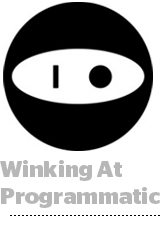 The German software company eyeo GmbH, which owns Adblock Plus (ABP) and created the Acceptable Ads whitelisting program, will launch its first programmatic technology for reaching ad-blocking audiences on Wednesday.
The German software company eyeo GmbH, which owns Adblock Plus (ABP) and created the Acceptable Ads whitelisting program, will launch its first programmatic technology for reaching ad-blocking audiences on Wednesday.
The Acceptable Ads Exchange (AAX) has been in in alpha testing since February with three DSPs – one in the US and two in Europe – and a few global media companies as inventory sources, said CEO Till Faida.
“It’s still in beta phase, but it’s ready to wind up now,” Faida said.
The early inventory and demand partners have not been disclosed. And though there are only a handful of participants, Faida said the network already reaches 40 of the top 100 most-trafficked sites in the US and 20% of the top 10,000 sites worldwide.
The AAX is an exchange where buyers can target users of the ad blockers ABP, AdBlock or Crystal, which have opted into Acceptable Ads.
“We feel like we’ve been doing this Acceptable Ads program for quite a while, and it’s been validated and is working well for publishers,” Faida said.
Eyeo has charted a treacherous course since it pivoted into ad tech two years ago.
Eyeo first dipped its toe in programmatic by partnering with ComboTag, an Israeli SSP startup that pitched its platform seats with Google AdX and AppNexus as a way to sell ad-blocking inventory on industry-leading DSPs. But Eyeo was promptly rebuffed when both Google and AppNexus kicked ComboTag and ABP off their platforms and denounced their business model.
“[ComboTag] won’t have a seat on the [AdX] exchange,” said Sridhar Ramaswamy, Google’s senior VP of ads and commerce, at DMEXCO 2016 in Germany. “We are pretty sure we don’t want to be in a business relationship that facilitates [what’s] gone on.”
At the same time, eyeo has fended off a new generation of ad blockers, like uBlock and uBlock Origin, that take a harder line against all ads. UBlock and uBlock Origin sell themselves against the fact that ABP and AdBlock, the world’s two most popular ad blockers, monetize users.
“Some people hate all online ads, and we won’t convince them to embrace Acceptable Ads, but we have a user base that understands the economics of the web and wants a healthy compromise,” Faida said. “That’s part of why I hope that this time around, this notion won’t be so controversial anymore.”
Only 6–7% of ABP users opt out of the Acceptable Ads program, he said.
The new AAX business, a US-based subsidiary within the eyeo holding company, will have a few strategic advantages that Faida believes will help it prosper, even as supply-side tech companies are plagued by shrinking margins.
“What makes AAX unique in the space is that it’s truly a different audience,” he said. “Everyone is targeting the same audiences and exchanges right now, and that means it’s hard to differentiate.”
Eyeo also has a growing team of more than 100 engineers contributing to the product, which AAX couldn’t support on its own without considerable funding.
Some publishing industry lobbyists have for years called out companies like Criteo, Taboola and Google – which on its own reportedly accounts for most of eyeo’s overall revenue – for paying whitelisting fees and legitimizing the ad blocker monetization model.
AAX will take a 20% cut of budgets spent on the platform – compared to Rubicon Project’s take rate, which dropped from 21% a year ago to 12% in the previous quarter. It’s a large margin compared to other programmatic exchanges, but the existing Acceptable Ads products take a 30% cut.
“Since we’re participating one step higher in the supply chain in this case, it’s consistent with that on a net basis,” Faida said.
The new ad blocker inventory exchange will be similar to other programmatic exchanges, he said, except for one switch to its auction dynamics making it easier and cheaper for advertisers to win inventory if their creative has positive user feedback.
This post was syndicated from Ad Exchanger.


More Stories
Marketing Morsels: Hidden Valley Ranch, La-Z-Boy, Topps & More
Flashback: Jane Pauley and Deborah Norville Revisit Today’s 1989 Succession Drama
Ally Financial Revives ‘Banksgiving’ With A TikTok Twist